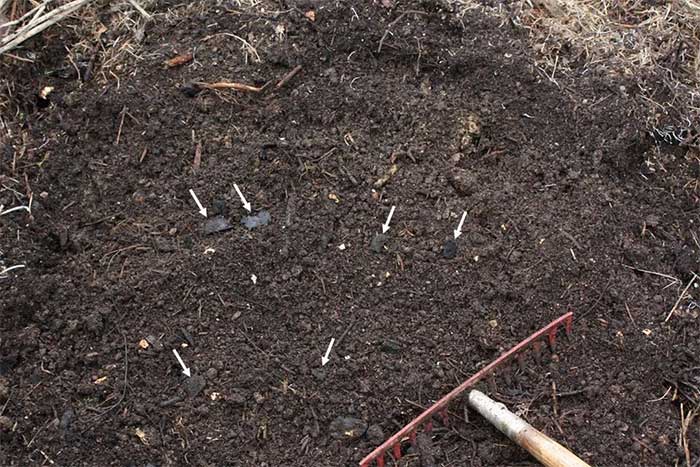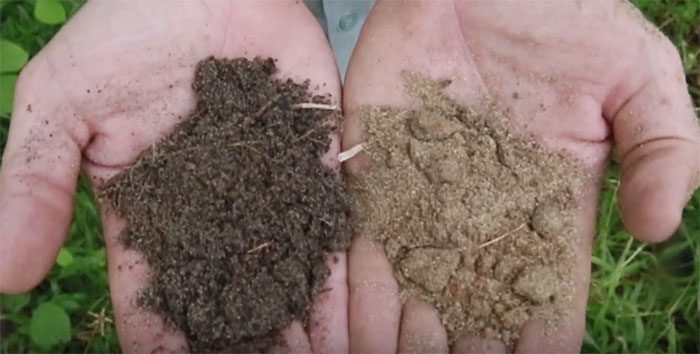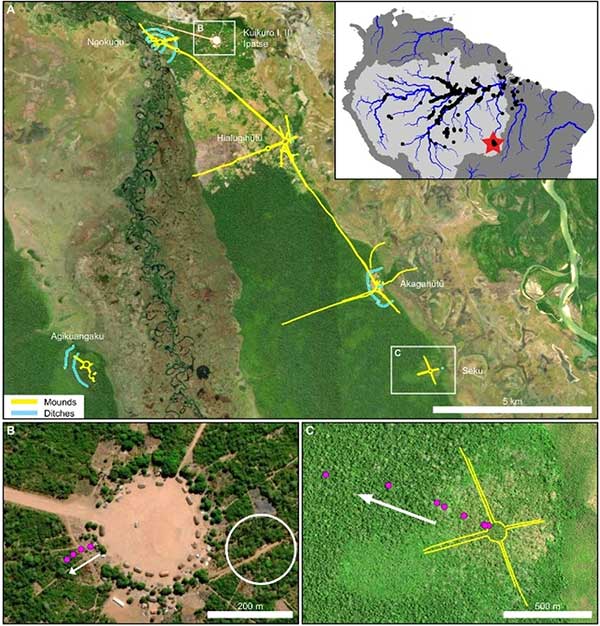In a recent study by American and Brazilian scientists, the secret of dark earth has been revealed.
Dark earth, or black earth (Terra preta), is a type of soil characterized by its very dark color and exceptional fertility. It is often found in the Amazon River basin, which is why it is also referred to as “Amazon dark earth.”

Dark earth (Terra Preta) created with charcoal pieces indicated by white arrows. (Photo: Wikipedia).
However, the origin of Amazon dark earth has not been definitively established. Some theories suggest it is the result of ash falling from volcanoes in the Andes. Another hypothesis posits that it formed due to sedimentation in lakes and ponds.
In a new study by American and Brazilian scientists, the mystery of this dark earth has finally been uncovered. According to them, dark earth is the result of the ancient Amazonian people enriching forest and forest-adjacent areas to sustain crops for centuries.
This argument is supported by many experts, as the upper basin of the Xingu River in southeastern Amazon was once home to the ancestors of the Kuikuro indigenous people.
“The results of the study demonstrate that the creation of dark earth was intentional,” the authors stated. “This shows the superior knowledge of indigenous people in sustainably managing tropical forests and sequestering carbon.”
To reach this conclusion, researchers have been working with indigenous communities in the Amazon since the early 2000s. They also compared the analyzed data with earlier findings from 2018.

Dark earth is darker compared to regular soil. It is characterized by its exceptional fertility, making it suitable for planting (Photo: EOS.org).
In a modern village called Kuikuro II, the research team also discovered soil very similar to dark earth found at archaeological sites. It is known that the hundreds of residents in Kuikuro II have relied on this fertile soil to cultivate crops such as corn, potatoes, and cassava.
Interestingly, the fertility of soil in central residential areas is higher than that in outskirts. The reason is that the “buffer” of soil is created to hold waste and leftover food.
After decomposition, these waste piles mix with barren soil to form the fertile dark earth, which the residents use for farming.

Locations of Kuikuro villages and archaeological sites noting the presence of Amazon dark earth. (Photo: Science.org).
“We observed the activities they undertake to improve soil and enhance elements, such as spreading ash on the ground or scattering charcoal around tree bases. These are clearly intentional actions,” stated Morgan Schmidt, one of the study’s authors.
An interesting characteristic of Amazon dark earth is that it contains very high levels of organic carbon. Additionally, certain elements like phosphorus, potassium, and calcium are found in concentrations up to ten times higher than in regular agricultural soil.
At one research site, scientists found approximately 4,500 tons of carbon stored in the soil. Meanwhile, the modern village of Kuikuro II also has about 110 tons of carbon stored in its soil mounds.
The authors of the study explain that the ancient Amazonian people added a significant amount of carbon to the soil, and much of it remains to this day.
They believe this method is one of the efforts aimed at mitigating climate change, which the ancient Amazonian people were clearly aware of and practiced long ago.
- Inside the “Invisible House” worth nearly 440 billion VND in the desert: Featuring a pool nearly the length of the house, rental price hundreds of millions/night
- Stunning photo of the Moon’s South Pole: “Hell Hole” -183 degrees clearly visible
- “War God” of the strongest fire truck in the world: Flames higher than 91 meters easily extinguished





















































